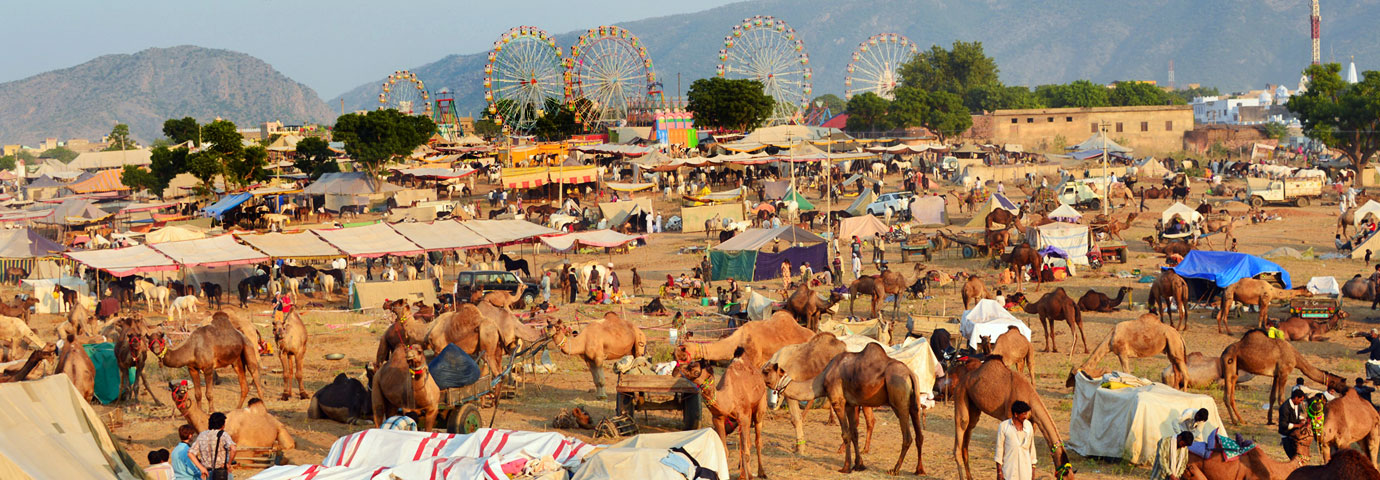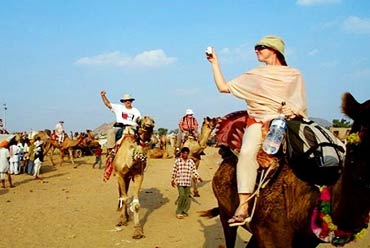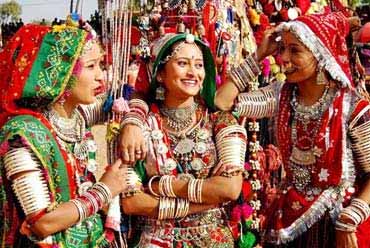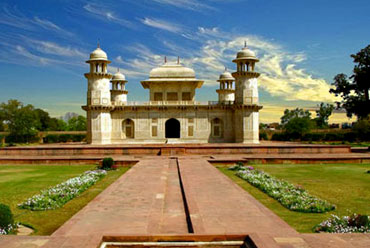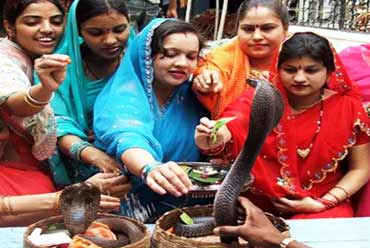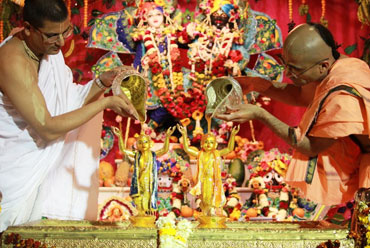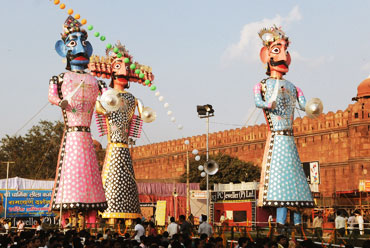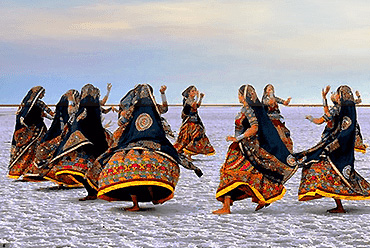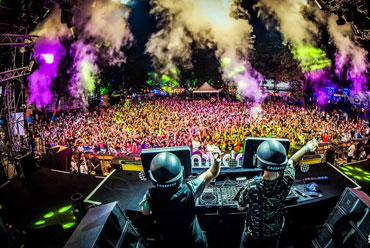Rajasthan is at its colorful best during fairs and festivals. There are numerous fairs throughout the year in the state, which brighten the otherwise hard and dreary lives of the villagers of the deserts.One of the most popular and colorful fairs of the Thar desert is the Pushkar fair, which begins on Kartik Shukla Ekadashi & goes on for five days till Kartik Purnima. The time of the fair coincides with the bright half of the moon during the months of October-November. The lake at Pushkar is one of the most sacred in India. From time immemorial, people have been gathering here annually during the month of Kartik to pay obeisance to Lord Brahma.
The Special Attractions
The picturesque lake of Pushkar is set in a valley just about 11 kilometres northwest of Ajmer, surrounded by hills on three sides and sand dunes on the fourth. Pushkar forms a fascinating location and a befitting backdrop for the annual religious and cattle fair. Turbaned heads of men, and colorful veils and skirts of the women, bring alive the arid desertscape. The village women dress in their best clothes and finery for the five-day mela.
Like Varanasi, Pushkar is one of the sacred places for the Hindus, with 400 temples of which the most important is dedicated to Lord Brahma - the creator of the universe. Fifty-two ghats bind the lake. During the days of the mela, the otherwise tranquil lake is engulfed with religious fervor. Thousands of devotees congregate to take a dip, sadhus descend from the Himalayas and people pray for salvation to the sound of verses from the Holy Scriptures, which fill the air.In the afternoons, people crowd the stadium where camels, horses, and cows are paraded and raced. Camels are bought and sold during the Pushkar fair.
On the roadside, stalls of all kinds are set up to sell a cornucopia of items. Almost every household is engaged in setting them up as the locals try to capitalize on the massive influx of people. It is impossible to drive around because of the large crowds. Either you hire a camel or you walk. In this aspect, it is truly a rural bazaar.
An interesting part of the Pushkar Fair is the mass trading of camels. Of course, cattle and other livestock are also traded, but it's camels that hold center stage at Pushkar. Camel-traders and villagers from miles away converge to Pushkar with their humped beasts. Over 25,000 camels (and that's on the conservative side) are traded; making this world's largest camel fair. Since Pushkar is a religious place alcohol and non-vegetarian food is prohibited.
Rituals/Traditions And Other Implications
These five days are a period of relaxation and merry-making for the villagers, despite being the busiest for them, as this is one of the largest cattle fairs in the country. Animals, mainly camels, are brought from miles around. Trading is brisk as several thousand heads of cattle exchange hands. All the camels are cleaned, washed, adorned, some are interestingly shorn to form patterns, and special stalls are set up selling finery and jewelry for the camels. Camels at the Pushkar fair are decorated with great care. They wear jewelry of silver and beads. There are silver bells and bangles around their ankles that jingle-jangle when they walk. An interesting ritual is the piercing of a camel's nose.
Races and competitions are organized. Camels lope across the sands sometimes throwing their riders on to the vast sands, amidst cheers and jeers from thousands of spectators. An interesting event is the camel beauty contest, where they are adorned and paraded. The camels preen before the crowds, enjoying every moment of the attention they get. It is believed that for five days every year, all the gods visit Pushkar and bless the devout. This accounts for the unbelievable number of devotees who flock to the lake to wash away their sins.
Legends
Pushkar is the only place in India where there is a temple dedicated to Lord Brahma. A legend recounts how Brahma sought an abode on earth. He sat on his hansa (his vehicle, the swan) and flew over the earth. He dropped petals of a lotus as he flew and lakes sprung up where they landed. He descended upon this site to perform a yajna, which however could not be performed, as his wife was not present. Narada was dispatched to fetch Savitri. She made preparations to arrive ceremoniously. Brahma, afraid that the auspicious moment would pass, asked Indra to "bring a wife from wherever you can". A young milkmaid, Gayatri was brought to the yajna and the puja performed. When Savitri appeared, she was so enraged that she put a curse upon Brahma-that he would not be worshipped anywhere except in Pushkar and that too only once a year. She then left for the Ratnagiri Hill and immolated herself. There is a temple atop this hill dedicated to Savitri.
Another legend has it that the Mughal ruler Aurangzeb, who was a devout Muslim but intolerant other religions, once went to Pushkar to get the temples there demolished. On reaching there, the King went to wash his face in the Pushkar lake but recoiled on seeing that the reflection in the lake was that of an old man with gray hair et al. Taking this as a bad omen, Aurangzeb decided against having the temples demolished and went back to his capital Delhi.

